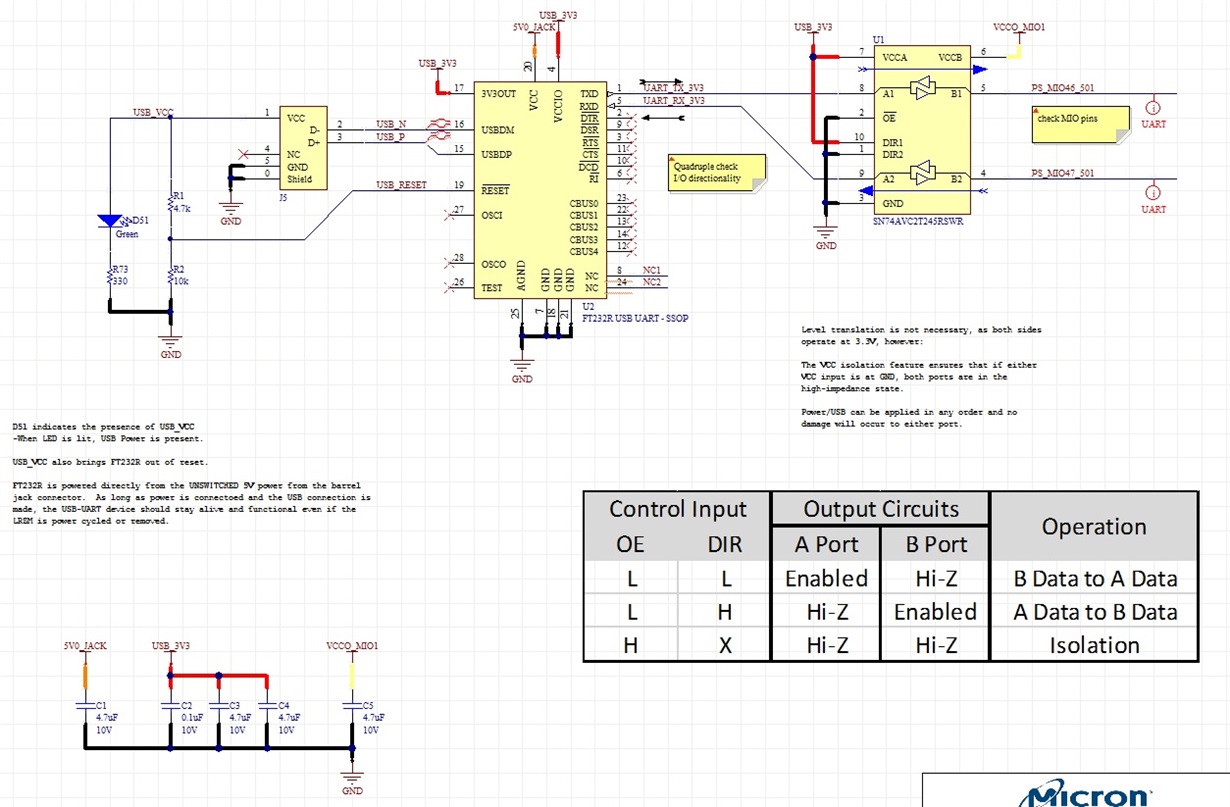We have a FTDI FT232R UART that is connected to a micro USB port. The FT232R is connected to a TI SN74AVC2T245 as seen below in the attached schematic diagram. Both PS_MIO46_501 and PS_MIO47_50 connect to Balls via a Samtec connector on a FPGA daughter board. The daughter board has been tested and the we are using the same ball connections over USB on another board. The problem that we have is when the FPGA daughter board is plugged in, the the FTDI chip fails.
We have done some testing since the FTDI chip would fail simply when connecting the micro USB and external +5V from a wall power supply. Since, we have removed R1, R2. We also grounded pin 26 on the FT232R as per FTDI. The FT232R works as it should until the FPGA daughter board is plugged in and turned on. Then the fails immediately. I am just wondering if there is something that was done incorrect on the SN74AVC2T245 that could cause this.
Datasheets:
www.ti.com/.../sn74avc2t245.pdf
www.ftdichip.com/.../DS_FT232R.pdf
Thanks,
Anthony White


